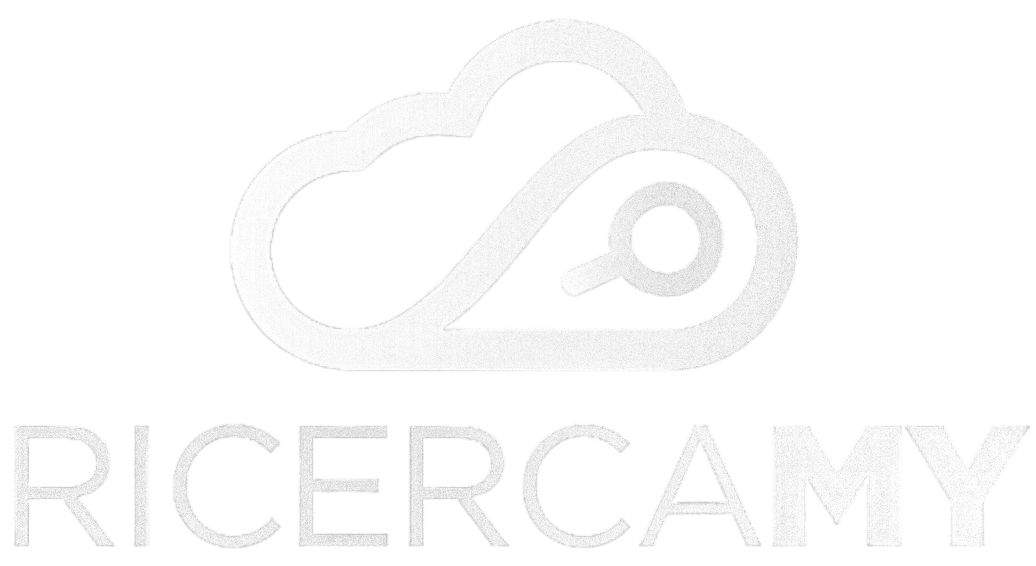When it comes to logistics, it is important to differentiate between traditional logistics and e-commerce logistics: each has different characteristics, usage scenarios and strategies.
Many companies find themselves having to combine B2C and B2B logistics in the same warehouse.
Traditional logistics mainly concerns physical retailers, such as local shops or supermarkets. It is a logistics segment focused on B2B, as exchanges are mainly made between suppliers and other retailers. Goods exchanges are generally large and regular, with flow and demand remaining constant throughout the year and planned in advance. Generally, traditional logistics is characterised by greater organisational simplicity, as the physical stock can be managed more easily and there is only one exit channel (direct sales).
E-commerce logistics, on the other hand, mainly concerns the B2C segment, with more frequent exchanges strongly influenced by product seasonality, trends and promotion periods. E-commerce logistics is more fragmented than traditional logistics, as both inbound and outbound movements can take place through different channels (online shop, physical store, marketplace, returns, etc.). It also involves the constant management of returns, which is more sporadic in traditional logistics.
Receiving a product is one of the most important moments of the customer experience related to online purchases: consumers come into contact for the first time with what they have purchased, and when and how they receive it has a profound impact on the shopping experience. It is no coincidence, in fact, that 34% of online shoppers choose the site where to buy on the basis of the delivery and collection options offered.
In this new shopping norm, immediacy, convenience and speed have become the main needs of consumers, who want to be able to choose from an infinite number of references, decide what type of delivery they want (point of sale collection, Click and Collect, Curbside, home delivery) and above all want to have speedy delivery. They are willing to pay for same-day and faster delivery.
From GoPuff, Gorillas, JOKR, to the rise of autonomous vehicular robot start-ups, delivery is becoming faster and faster because return on experience is one of the parameters on which consumers evaluate their experience with a brand.
The differences between traditional logistics and e-commerce logistics are considerable: from the frequency of supply and sales channels, to the organisation of returns and stock monitoring, online shop logistics involves more aspects to pay attention to. To cope with this, it is essential to use an e-commerce logistics platform to easily monitor operations in order to anticipate trends, forecast demand and take informed action.
In order to respond to increasingly “just in time” logistics, we need automated storage and material handling solutions that guarantee flexibility, precision and efficiency in the management of stocks and product flows.
Managing e-commerce logistics efficiently is perhaps the most important aspect of successful online sales: according to one study, 66% of online shoppers in Italy expect to receive their order within 3-5 days, while 13% expect to receive it within 1-2 days of purchase. The most common problem encountered by online shoppers (17% to be precise) is slower-than-expected shipping, and 17% of respondents say they avoid online shopping because of doubts and concerns about receiving and sending orders. All these statistics confirm that investing in e-commerce logistics is an investment that pays for itself in terms of sales, customers and the overall success of the business project.
One of the most important challenges for companies is warehouse management. From the shop that is entering the world of e-commerce for the first time to the global giants that manage a huge volume of goods in their warehouses.
Organising the receipt of goods efficiently is the first step in optimising your eCommerce logistics strategy: it is important to ensure that you define clearly and precisely how often goods will be procured and adopt an automated procedure to automatically update the stock, reducing the manual workload.
For the correct storage and preservation of goods, it is important that the warehouse is properly ventilated and sheltered to prevent moisture, temperatures and weather from damaging the products. In addition, for food products, HACCP procedures must be followed to prevent contamination of goods and ensure their wholesomeness.
Purchasing management includes all activities that the company undertakes to coordinate the procurement of goods, raw materials and products for sale. It is usually carried out with the help of apps and software for organising the warehouse or company resources.
Inventory and stock management is probably the most complex and multifaceted challenge to be faced in e-commerce logistics. There are several methods and strategies for managing inventory, including:
FIFO (first in, first out) method. According to this method, the oldest stock (first in) should be sold first (first out). This is a valid strategy for many shops, especially those selling food or perishable goods.
LIFO method (last in, first out). In this case, the most recent stock (last in) should be sold first (first out). This method has few practical applications: it could be valid, for example, for highly seasonal products that would become unsaleable if locked for a long time.
JIT (Just in time) method. Applied to e-commerce logistics, the Just in time method involves a warehouse that is replenished according to actual need. It is a strategy that allows you to significantly reduce your warehouse costs, but requires careful analysis of trends and meticulous monitoring of remaining goods.
ABC method. The ABC method distinguishes goods in three bands. A is a given % of stock that generates 80% of turnover or sales; B is a given % of stock that generates 15% of turnover or sales; C is a given % of stock that generates 5% of turnover or sales. According to this tactic, A-range products should be the ones always in stock, while B- or C-range products could be greatly reduced or supplied only in case of real need.
Finally, the management of goods transport plays an important role. In this last step, the responsibility for the delivery of products – and customer satisfaction – passes into the hands of the trusted courier or freight forwarder. This step is also known as the ‘last mile’ and includes all the operations necessary to transport the goods from the warehouse to the customer’s home or to a collection point for Click & Collect.
The main types of warehouse management
In the field of e-commerce logistics, there are three main types of warehouse and as many strategies for managing them. Each type has advantages and disadvantages, let’s see them in detail:
Owned warehouse. According to the E-commerce Italy report for 2021, 60% of Italian shops will use their own warehouse. The advantages of internalising the warehouse include total control over stock and shipping operations, as well as the customisation of product packaging. The disadvantages are the cost of storing goods and the increased workload required for proper warehouse management, which can however be significantly reduced by using a unified platform for shipment management.
Warehouse outsourcing . The outsourced warehouse is chosen by 17% of Italian e-commerce companies. Its advantages include the ability to outsource a significant amount of work, reducing your operations and improving shipping efficiency, but with higher costs compared to an in-house warehouse and less control over the shipping experience. It is an option frequently chosen by shops selling generic or general purpose products that are less interested in branding.
Dropshipping – chosen by 7% of Italian online shops – is a business model in which products are not physically in the possession of the retailer, but are shipped to the end customer directly from the supplier or manufacturer of the products. Advantages include significantly lower operating costs compared to a traditional shop and access to an almost infinite inventory of products to sell online. Disadvantages include high competition, low profit margins and low brand customisation.
Software, ERP and ERP for warehouse management
To manage e-commerce logistics, there are numerous ad hoc software packages designed to streamline the process and automate warehouse operations. Let’s take a look at the main types of software and their characteristics.
E-commerce logistics software allows you to manage all the operations associated with logistics from a single location, including order processing, automatic generation of shipping labels and tracking of shipped items. With frequently integrated business intelligence tools, they allow you to monitor your shop’s performance in real time and use insights to increase sales. They are recommended for businesses that use the online shop window as their sole or main sales channel.
Logistics management software is more advanced software that allows you to organise all warehouse operations. Typical functions include barcode management, minimum stock and reorder lot management, as well as practical tools for calculating and optimising the value of goods (including average cost, last cost, LIFO cost, etc.). They are chosen by companies that use multiple sales channels, e.g. proprietary online shop, marketplace and physical shop, and manage a large volume of goods.
Enterprise resource planning (ERP) software is used by organisations to manage all day-to-day business activities, and integrates advanced functions such as accounting, procurement, project management, risk management, compliance and supply chain management. Typically, ERP software also includes a suite of enterprise performance management functions, which are all about planning, forecasting, monitoring and communicating business performance. ERP software is the most comprehensive software of its kind and is primarily used by large enterprises that manage a large flow of data and operations.
One of the most in-demand jobs is the Supply Chain Manager, who assesses the production and sales of goods and transport, transferring a range of information that is then reported to company management.
The IT profiles most in demand in e-commerce logistics are: Digital Transformation Manager, IT Manager, CRM Specialist, Innovation Manager, Customer Engagement, Digital Transformation Specialist, Machine Learning Specialist, Disaster Recovery Manager and Automation Specialist.
In the IT sector there is strong competition in the market and speed in contacting them and a salary study are the bases for optimising a selection process.
Ricercamy, a revolutionary and dynamic head hunter, born in March 2012, has, since its inception, been committed to introducing innovative elements into the world of Search and Selection that would improve the redemption of Recruiting activities.
According to a study by Linkedin, 75% of talents are passive and already working, not proactively looking for new professional opportunities. Only 25% of them are more consistently interested in actively searching for new job offers. Therefore, investing the company’s budget in subscriptions and/or offers from job posting platforms cannot be the only effective solution.
It is necessary to adopt a methodology that allows us to reach the best candidates: headhunting calls!
This is how our specialised headhunters find qualified staff for our clients.
Our consultants’ anonymous calls are able to intercept any profile with different seniorities.
Through a very thorough and technical telephone pre-screening, in addition to the personal data, we collect all the specifications on the candidate’s experience necessary to assess its validity and thus allow the candidate to access the next step.
All of the above is carried out and shared in real time via a cloud file in which it is possible to work hand in hand with the client company’s human resources representative, who does not have to wait 2-3 weeks to receive the first shortlist of valid profiles, but just a few hours!
Transparency and immediate sharing is a distinctive trait of Ricercamy, which has specialised over the years in the search and selection of technical figures in the IT field, thanks to the development of specific skills and knowledge of the profiles sought and the reference market.
By searching for personnel on a daily basis, our headhunters have acquired know-how and specialisation in their sectors, which allows us to be leaders in this market crowded with recruiters.
Thanks to our tools, since its inception, Ricercamy has helped from the smallest IT start-ups to the largest IT giants in the selection of qualified personnel who are difficult to find and hire. Thanks to the SMART commercial offer, our clients ask us to carry out selections that they have always tended to do internally, but since we have certain costs and do not provide completion fees or exclusivity, they feel free to delegate to us the management of their vacancies, or those more difficult or repetitive activities, thus lightening their workload.
If you are also looking for these profiles, don’t wait!
Fill in the form below and you will be contacted within an hour by our specialised consultants.
Ramona Scalise
HR Consultant IT Division
Ricercamy







